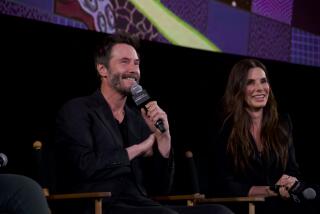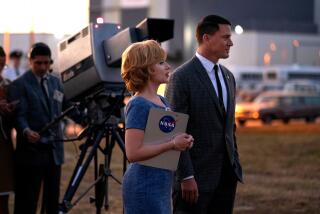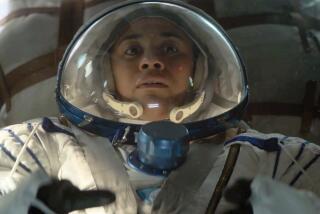‘Gravity’: On outer space, the film doesn’t need to nail every fact
Warner Bros.’ box-office hit “Gravity,” starring Sandra Bullock and George Clooney, has impressed reviewers and dazzled filmgoers.
But on opening weekend, astrophysicist Neil deGrasse Tyson, who runs the Hayden Planetarium in New York, couldn’t help but fact-check some of the film’s details. He pointed out via Twitter, for example: “Mysteries of #Gravity: Nearly all satellites orbit Earth west to east yet all satellite debris portrayed orbited east to west.” Also: “Mysteries of #Gravity: Why Bullock’s hair, in otherwise convincing zero-G scenes, did not float freely on her head.”
And Tyson’s not alone, as The Times’ Rebecca Keegan reports: “Michael Interbartolo III, who flew the shuttle for NASA, has critiqued the realism of the trailer on the science fiction website Blastr. Elsewhere, second-man-on-the-moon Buzz Aldrin has praised the movie’s portrayal of zero gravity but said the shots of the Earth from space looked too clear.”
Of course, this is a fictional movie, not a documentary. Still, do the filmmakers have a responsibility to get these sort of details right?
Writing in our Op-Ed pages, Marlene Zuk recently took on Hollywood for misrepresenting animals in movies. “As a biologist, I see a similar disconnect between the way animals are portrayed in movies and the way they are in life,” she wrote. She continued:
“It’s not that I want to be a scold. I don’t mind minor errors; I expect some poetic license; and I do get that fiction is not real. Talking animals, for example, are fine with me, and I thought the screeching gulls in “Finding Nemo” who called “Mine, mine!” absolutely nailed the basic personality of the seabirds. But movies shouldn’t get the most basic principles of animal life wrong. Think of it this way: If you were making a sports movie, it wouldn’t be OK for the basketball players to dribble a soccer ball, or for a baseball team to have six members. Doctors performing a heart transplant on a medical show wouldn’t be cutting open the patient’s thigh. If those things happened, we would think the filmmakers were oblivious on matters of common sense.”
Zuk makes a good point. Still, most filmgoers know not to take everything presented in a movie as fact. Instead, we let the story spark our curiosity.
What’s more important is that films have the power to turn audiences on to topics they may not have thought much about, such as space exploration. And it’s all the better when a film like “Gravity” inspires astronauts to start a dialogue with the public.
Even better: “It’s going to remind people we are still in space, that we do still have a space station,” says astronaut Mike Massimino. “A lot more people are going to watch this movie than watch the spacewalk that NASA does.”
That, too, is a fact.
ALSO:
A civil rights act for ‘My Little Pony’ fans?
Olympia Snowe: This is no way to run a country
In shutdown war, Democrats may be losing the PR battle
Follow Alexandra Le Tellier on Twitter @alexletellier and Google+
More to Read
A cure for the common opinion
Get thought-provoking perspectives with our weekly newsletter.
You may occasionally receive promotional content from the Los Angeles Times.










